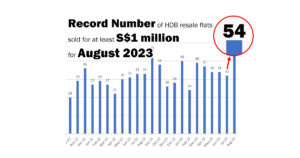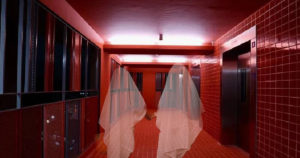With the announcement of the Prime Location Public Housing (PLH) model by the Ministry of National Development (MND) and the Housing & Development Board (HDB) on 27th Oct 2021, some of us may have questions on the balloting for public housing built in prime, central locations like the city centre and the Greater Southern Waterfront.
First, the Prime Location Public Housing (PLH) model is conceived through public engagement from ‘feedback and suggestions from diverse groups of Singaporeans’ to ensure that public housing in a prime locations is kept affordable, accessible and inclusive for Singaporeans. There are several features that are starkly different from the typical resale HDB model.
- At least one applicant is a Singapore Citizen (SC)
- Household must comprise at least one SC and one Singapore Permanent Resident (SPR).
- At least one applicant is an SC or SPR
- A household can comprise only SPRs
The eligibility criteria are further tightened by mandating minimal one Singapore citizen for PLH resale flats purchase. This is not applicable for the typical HDB resale flat where households comprising of only Singapore Permanent Residents (SPR) are allowed to buy. Singles aged above 35 years old and above are not eligible for PLH resale flat. With the additional income ceiling of $14,000, this further limit the pool of potential buyers for PLH resale flats.
Another repercussion of imposing an income ceiling would infer a PLH resale flat price ceiling.
Using $14,000 as the income ceiling, we may calculate the potential PLH resale flat price ceiling using the current HDB purchase framework. Both scenarios under HDB and private bank housing loans are compared using the same interest rate and loan tenure.
HDB housing loan:
| Combined Income | 14k |
| Monthly mortgage using MSR (Mortgage Servicing Ratio) at 30% | 4.2k |
| – 90% Maximum loan (Using 2.6% housing loan from HDB as reference and maximum of 25 years loan tenure) | 925k |
| – 10% Down Payment Cash/CPF | 103k |
| PLH flat resale price limit | 1.03 million |
Private bank housing loan
| Combined Income | 14k |
| Monthly mortgage using MSR (Mortgage Servicing Ratio) at 30% | 4.2k |
| – 75% Maximum loan (Using 2.6% housing loan from HDB as reference and maximum of 25 years loan tenure) | 925k |
| – 25% Down Payment Cash/CPF | 308k |
| PLH flat resale price limit | 1.23 million |
Assuming a couple who earns a combined monthly income of $14,000 with enough cash/CPF for a 25% down payment and is also eligible for a maximum loan tenure of 25 years, they will be able to purchase a PLH resale flat at around $1.23 million under private bank housing loan. If the couple has much more cash/CPF on hand, they would be able to stretch further on the resale price bid but if they have to opt for an HDB housing loan due to inadequate cash/CPF for the down payment, the maximum fetch price is around $1.03 million.
Inevitably, the income ceiling put a dampener on how much the PLH flat can fetch on the resale market.
Another feature between BTO and PLH model is the ownership condition.
| S/N |
|
BTO Model | PLH Model |
| 1 | Resale of flat | Allowed after MOP of 5 years | Allowed after MOP of 10 years |
| 2 | Investment in private property | Allowed after MOP of 5 years | Allowed after MOP of 10 years |
| 3 | Renting out of the whole flat | Allowed after MOP* | Not allowed |
| 4 | Renting out of spare rooms | Allowed | Allowed |
One key feature of buying a PLH flat from HDB is that the Minimal Occupation Period (MOP) is 10 years, double of the BTO model. Under the BTO model, a couple may have realized potential appreciation gain in the resale market twice and upgraded to a private condominium.
Taking into account of additional waiting period for the flats to be built, it is certain that such a prolonged lock-up period would infer an opportunity loss.
Furthermore, PLH flat owners are not allowed to rent out the whole flat, unlike owners under the BTO model.
HDB had stated that it will claw back a percentage of the PLH resale flat’s price to recover some of the additional subsidies to curb the ‘lottery effect’ of buying these new PLH flats. Details are not specified currently but we would be expecting HDB to clarify further on the upcoming launch PLH site at Rochor. You may join our mailing list to receive that update in your inbox by clicking here.
To summarize the changes for PLH flats:
New PLH flat
- Tighter rules on ownership
- Tighter rental condition after MOP
- 10 years MOP
- Clawback of additional subsidies
Resale PLH flat
- Tighter rules on ownership
- Monthly Income ceiling of 14k for resale buyers
It would be interesting how much the PLH flat would be offered and the respective potential price appreciation upside in the resale market. Given the decentralization of the city centre, it might be worthwhile to take a look at the public housing around the different regional centres in Singapore.

Mark Lim
Decisions are best made with reliable data. With his passion for numbers and data, Mark strives to provide insights to his clients and reader to make better decisions. If you are looking just for advice, he will always be available. Talk to Mark today!
Enjoy what you have been reading? Join our mailing list to get valuable insights delivered to your inbox.


